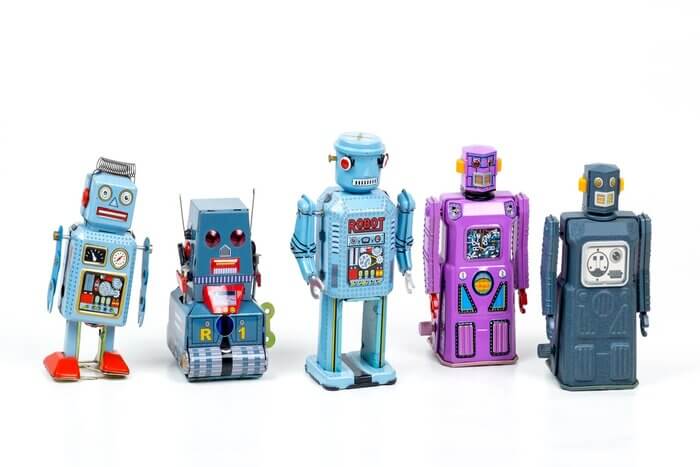Can a Robot Write Technical Documentation?
 ClickHelp Teamin Technical Writing on 11/18/2020 — 4 minute read
ClickHelp Teamin Technical Writing on 11/18/2020 — 4 minute read ClickHelp Teamin Technical Writing on 11/18/2020 — 4 minute read
ClickHelp Teamin Technical Writing on 11/18/2020 — 4 minute read

Robots are often described as some kind of intruders in fiction books, movies, and games. They are soulless creatures that were invented by humans with the best intentions in mind, but it rarely ends well. If there’s no apocalypse, then there’s the robots-taking-our-jobs idea. And, quite frankly, it is not too far from the truth. At least with the latter case 🙂 So many things are automated now. And it is for the best, of course. Especially when we are talking about dangerous jobs where people could get injured. In the perfect world, where humanity finally learns to get the maximum benefit from automating everything, humans are supposed to live much more carefree. Working hours should be decreasing, naturally, as well. What can I say, this is a bright and promising future to look forward to! But… At the moment we are stuck in the transition period.
A lot of changes connected with automation are happening here and there, but we still need to figure this out and learn to balance things. We need to understand where it works best, which directions should receive more investments, and where we need to be more cautious about moving forward with automation. Sometimes, there’s no fitting technology yet, other times it could potentially cause too much turbulence to release so many people of their work at a time. Moreover, at the beginning any automation process requires additional investments, time, and research. You will not see the results immediately.
Let’s take a look at what is going on in techcomm. And, really, can a robot write technical documentation?
Robots are not humans, so creativity is yet beyond their reach, which means that they work much more efficiently with structured data and algorithms. You probably heard about Simplified Technical English (if you didn’t, check out this article – What is Simplified Technical English). This standard was created for multiple reasons, but the most prominent of them were making technical texts less ambiguous, more concise and structured. When there’s less leeway for human imagination, the texts become rigid and repetitive in patterns, turning easier material for robots to work with. And, still, it looks like these things are not enough for any kind of automated tech writing experience. Where STE works well, however, is in the context of automating translation of technical texts to different languages. And, since a lot of technical documents require translation, we can see how automation can seriously speed-up the process of producing multi-language versions of documents. As of this moment, robots can aid in creating user manuals and other types of technical documentation, but they are yet to learn to actually write it.
What is it exactly they lack?

Artificial Intelligence lacks one of the most humane qualities – empathy, it just doesn’t understand other humans. It can’t simply rely on a hunch that helps experienced tech writers determine what should be explained more thoroughly, what is the best way to do it, and what means should be used in the process. Technical writing is too complicated to fit within an algorithm that you can feed to your AI. It is not simply a set of descriptions and instructions, it is an attempt to foresee how a reader will perceive this data and do your best to break their fall by finding the best form for the content and also prompting them in the direction of further reading.
However, at the moment, the technical writing sphere widely uses automation to make the workflow smoother and to reduce routine. Of course, it is not yet using robots to create technical documentation. But this tendency already shows that we are moving in that direction. So, where do we use automation? We can auto-replace text, insert special characters with just one button-click, call a sequence of commands, etc. We can even use special tools to create screenshots automatically. This is vital for those who create documentation with lots of images, as taking screenshots may be time-consuming. This is definitely a field for further development. What is most important is that we can use automated documentation generation. It includes the following:

I think that the answer to the question ‘Can a Robot Write Technical Documentation?’ lies in the term ‘technical communication’. I always thought that these words added the required depth to the notion of technical writing. Technical writers are truly communicating with their readers through text. This is a peculiar communication, it lacks emotions for the most part and may seem dry and too formal. But the thing is this is just the right way to do it if one wants to avoid misunderstanding and ambiguity. So, this communication process relies heavily on how we, humans, perceive each other and empathize with each other, and this is something robots still can’t do. But at the same time, AI and automated technologies can really make the technical writing process faster and easier. Technical documentation automation is something that may help you create a brilliant source of information for users. We`ll see what this sphere will give us in the future.
Good luck with your technical writing!
ClickHelp Team
Author, host and deliver documentation across platforms and devices
Get monthly digest on technical writing, UX and web design, overviews of useful free resources and much more.
"*" indicates required fields